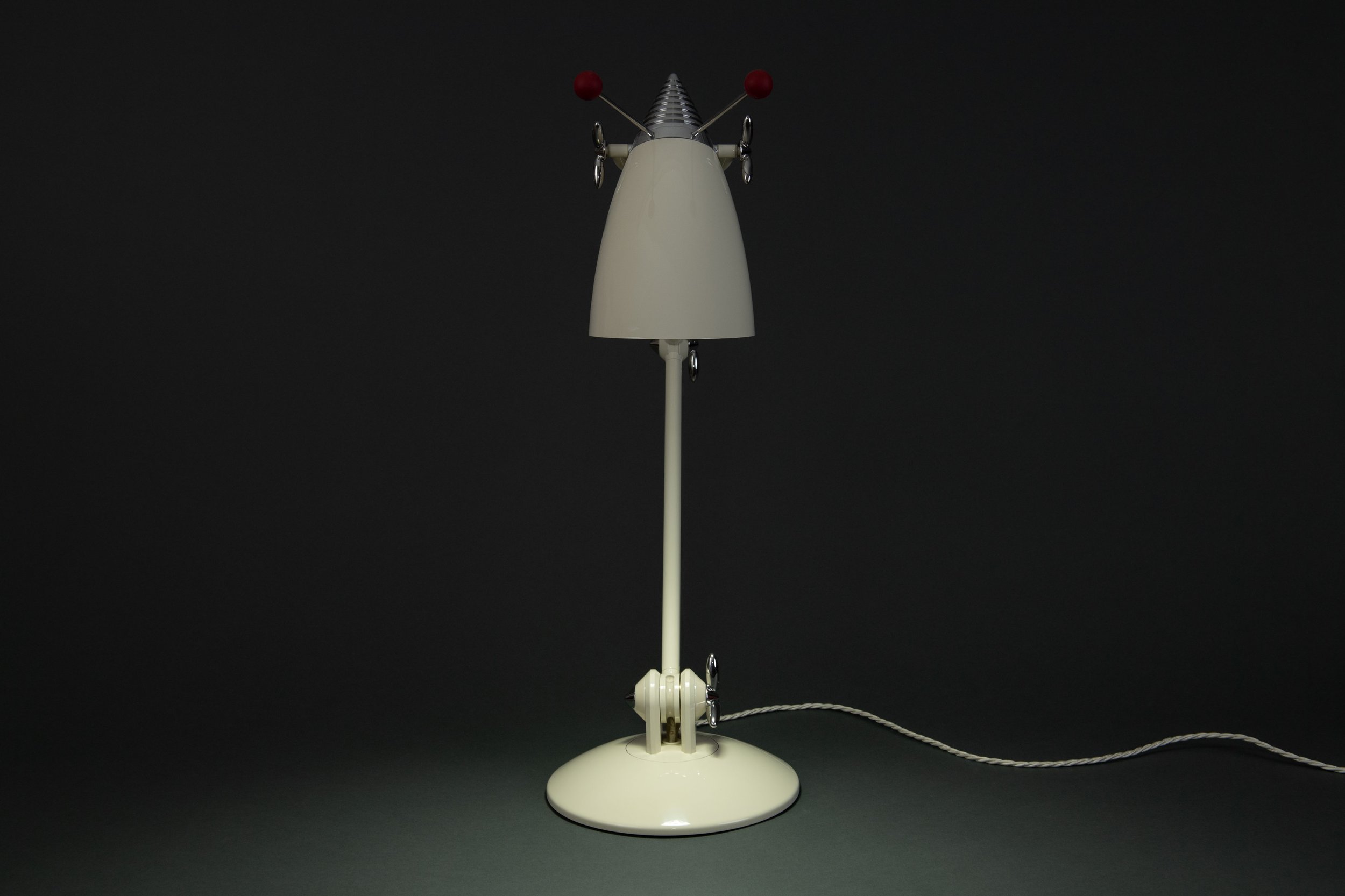BEHIND THE WORKBENCH
We go behind the workbench to talk with founder, designer and maker, Christopher Hill, about the launch of his inaugural collection. We talk inspirations, ideas and everything in-between.
Hi, welcome Chris. Can we just begin with you introducing yourself first?
Hello, my name is Christopher Hill and I’m an industrial model maker, designer and design engineer. Throughout my 40 career I have worked for many varied clients across my two companies. My first company was Benchmark. It was during these Benchmark years that I made design models for Samsung and Nokia. Later on I then founded my second and current model making company Solve3D and I have been honoured to work with many royal designers of industry such as Jasper Morrison, Ross Lovegrove, Julian Brown, with projects stretching across product design, film, transport, fine art and much more.
You’ve had a very long career of 40 years so far, can you remember the first time you began to have an interest in making things?
Yes, I think my interest for creating things started form quite an early age. When I was around about nine or ten years old I started making model railway layouts, believe it or not! Where I was living at the time there weren’t really any of the courses that are available these days to widen my making interests so I started with cardboard and began making lots of Tudor style houses for model railway layouts. Some of what I learnt was also from TV programmes at the time too. In these programmes they would demonstrate and show you how to make things such as mountains and lakes and things like that. Later on I then developed an interest in woodwork, metalwork and engineering drawing at school and that was mainly due to my teachers in those subjects who were particularly engaging. My engineering drawing teacher used to work at Rolls Royce during the war and worked on the Merlin Engine and he was just a fascinating guy and really engaged me in the subject. I absolutely loved it. Those were the days when we worked on drawing boards so there was no CAD. It was all about understanding the shapes and geometry of how things were constructed.
Throughout your career you have worked alongside some of the biggest names in the industry. What have all these professional projects and collaborations taught you through the years?
A lot of the projects that I have worked on have been quite varied, with each and every project presenting new challenges. You do use a basic skill set throughout but you learn to adapt them to suit the project. I don’t think you can ever say you are a complete model maker, I think you are always learning and you are always picking up new skills and also adapting the way in which you utilise old skills to suit each and every job.
The first release from your debut Esoteric collection has just launched. What sparked your journey to want to design and create your own pieces?
Well I’ve always had a hankering for designing and creating my own items. Being an industrial model maker gives you the unique experience of seeing many products go through the rigorous design process involved in bringing it to market so you are able observe many of the challenges and learn where best to implement solutions and how to overcome some of the harder aspects of the process.
What excites you about designing and making?
What excites me is having a new project that is perhaps slightly different to anything I’ve done before and work out what the most efficient way is to make a first class job of the project. And that’s it really.
Can you tell us about some of the inspirations for your newest Esoteric collection?
Yes, of course. Essentially the Esoteric collection is a series of items which I have designed and made myself for my own enjoyment and it’s based upon influences throughout my life, beginning from a very young age and spanning throughout the rest of my life and career too. What really sparked it was the space technology of the late 50’s, 60’s and 70’s, its a topic I have always been very interested in.
What do you hope people will gain/ experience with the new collection?
I hope people will enjoy the pieces. The whole idea of them is to create something that was aesthetically pleasing, functional and has some quirkiness to it that makes life fun. I wanted to create something that people looked at and made them smile and perhaps it is evocative of something in their life, a moment in their life. That’s all I want to do really. I don’t want to make a big design statement, I just want to people to enjoy the objects, use them and for the items to be functional.
What do you think defines and heirloom item?
I would define it as something that you are given or you buy, that you’ll have and love for the rest of your life. Perhaps you’ll then later pass it on to others too. It’s something that doesn’t have a finite life. You don’t think to yourself ‘oh it’s broken, I’ll throw it away’ because the pieces are well made and the materials are of quality and the quirkiness of the item will bring a smile to your face will hopefully this will then be reflected in how long people keep it. They won’t get bored of it. They’ll have it somewhere in the house, they’ll love it and can keep adding to their collections around their house and it will simply become an addition to a group of belongings that will be around for a very long time.
Your debut collection has been 40 years coming, what can we expect next?
The task lamp was an idea born out of covid. It was quite a long process to develop the lamp through several prototypes until I’d designed and made something I was happy with. Next, I want to follow on with some more lighting, which is born out of the task lamp. Domestic lighting that can be involved in a kitchen or living room scenario. I will have the same themes running through it but it will be interesting to see how the new environments will impact the items. Following on from that we will look into introducing some furniture to the collection too and to be honest I don’t really want to be constrained by what we might have in the future. I just go the way my instinct tells me.
Okay, now for some quick fire Q’s: Favourite tool? Favourite material to work with? Favourite homeware piece you own in your personal collection? Favourite technique? Favourite reference book?
My favourite machine is my lathe. My favourite material to work with is wood. My favourite piece in my personal collection is probably my guitar. Favourite technique is a really tricky one. There are so many to choose from… I’m going to have to think about that one… Favourite reference book. Bauhaus by Magdalena Droste.
Finally, any advice you have learnt over the years when making that you’d like to share?
Make sure you work in a clean environment. Keep it clean and orderly. Think about your method also and the order in which you carry out tasks. It’s very very critical because what you want to prevent is hitting a road block along the way and having to back track on what you are doing so just think really carefully about the order of the build.
Follow Along On Instagram
@christopherpaulhill















